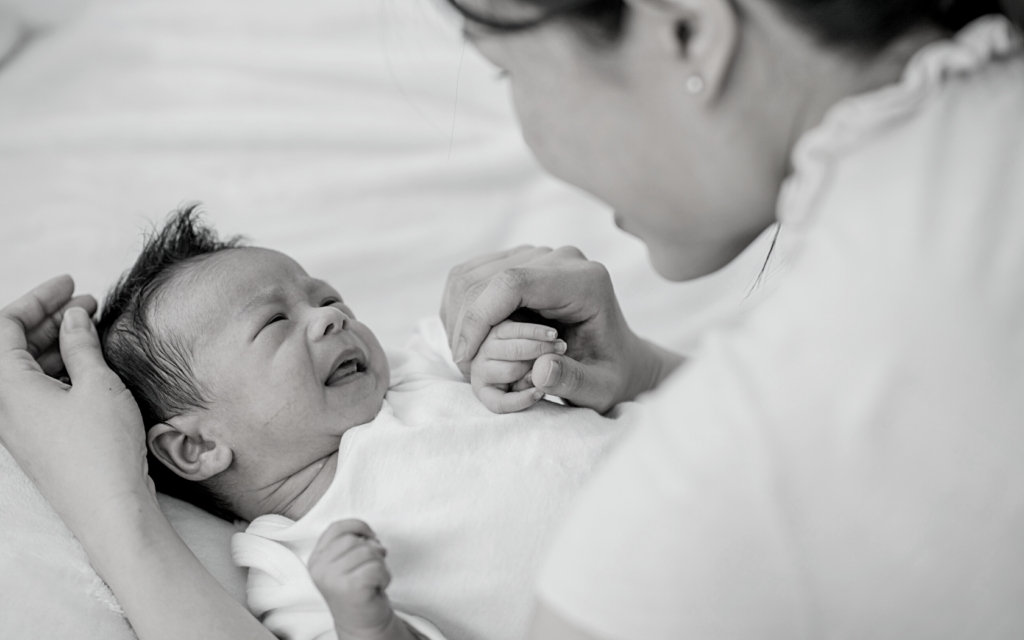
The brachial plexus is the nerve network that transmits messages from the spinal cord to the shoulder, arm, and hand. These nerves sustain a brachial plexus injury when they are stretched, compressed, or, in the most severe cases, torn apart or torn away from the spinal cord.
Different types of brachial plexus injuries exist. Depending on the location of the nerve damage, these injuries may be referred to as neonatal brachial plexus palsy, brachial plexus birth palsy, or Erb's palsy.
Erb’s Palsy involves the upper portion of the brachial plexus (C5, C6, and sometimes C7). The muscles of the shoulder and biceps are typically weak in children. To prevent stiffness, atrophy, and shoulder dislocation, physical therapy at home is initiated at 3 weeks of age.
What Happens in a Brachial Plexus Injury?
A brachial plexus injury can occur during childbirth if the baby's neck is stretched to one side.
The brachial plexus nerve network extends from the spinal cord nerve roots in the neck to the armpit. From this point, nerves extend down the arm to the forearm, hand, and fingers.
When a force of sufficient magnitude increases the angle between the neck and shoulders, the brachial plexus nerves may stretch or tear. The injury may also separate the brachial plexus nerve roots from the spinal cord. Damaged nerves transmit sensations poorly and reduce muscle strength.
Symptoms
Your child may exhibit any or all of the following symptoms on the injured side:
· Limited or absent shoulder, arm, and hand mobility
· Weakness of muscles or a limp arm
· Sensitivity loss in the shoulder, arm, and hand
· Drooping eyelid
· Constricted (smaller) pupil of the eye
· A shorter and smaller arm
· An unusual position (the arm may bend toward the body or hang limp)
Possible Causes
Compression of the brachial plexus nerves can occur in the womb or during a difficult birth, which can result in nerve damage.
- The head and neck of the infant pull to the side as the shoulders pass through the birth canal.
- The shoulders of the infant stretch during a head-first delivery
- Pressure on the infant's raised arms during a breech (feet-first) birth.
Neonatal brachial plexus palsy (NBPP) exists in various forms. The type varies according to the degree of arm paralysis:
- Brachial plexus palsy affects the upper arm almost always. It is also known as Duchenne-Erb disease or Erb-Duchenne disease.
- The lower arm and hand are affected by Klumpke disease. This is rarer than usual.
The risk of NBPP is increased by the following factors:
- Maternal obesity
- Breech delivery
- Larger-than-average newborn (such as an infant of a diabetic mother)
- Difficulty delivering the shoulder after the head has been delivered (called shoulder dystocia)
NBPP is less prevalent than it once was. When there are concerns about a difficult delivery, cesarean section is utilized more often. Although C-sections reduce the risk of injury, they do not eliminate it entirely. C-sections carry additional risks.
How Is a Brachial Plexus Injury Diagnosed?
Brachial plexus injuries in newborns are a common type of birth injury. However, detecting them in newborns can be difficult. The affected arm will be examined for paralysis, numbness, position, and grip strength. They will also examine the infant's Moro reflex (startle response). This occurs when a baby throws their head back, stretches their arms and legs, and then pulls it back in.
Typically, a specialist who treats infants with these injuries supervises the diagnostic procedures and treatments. The specialist may recommend:
TREATMENTS
Observation
Most brachial plexus injuries heal naturally. Many children recover by 3–12 months. Exams should be done regularly to track progress.
Physical therapy or occupational therapy
Therapists teach parents how to do range of motion (ROM) exercises with their children at home several times a day. These exercises maintain joint and muscle function.
SURGICAL OPTIONS
Three to six months after birth, children who continue to have problems may benefit from surgical treatment. The doctors treating your child's brachial plexus birth injury have a number of surgical options, including:
1. Nerve Surgery
This surgery involves nerve grafting and nerve transfer. It is best done between 3 and 9 months of age and rarely beneficial after 1 year.
2. Osteotomy
An osteotomy is a surgical procedure in which bones are cut and realigned to improve the function of the upper extremities by repositioning the hand and arm. It is performed most frequently on the humerus (upper arm bone) or the forearm.
3. Tendon Transfers
Tendons connect muscles to bones. Tendon transfers involve detaching and reattaching the tendon. A healthy muscle helps a weaker or injured muscle recover in this procedure, usually done between 1 and adulthood. Tendon transfers improve arm raises around the shoulder, wrist, or hand. Post-surgery casts last four to six weeks for kids.
4.Open Reduction of the Shoulder Joint
Open reduction, performed through a surgical incision or arthroscopy, reduces (replaces the humeral head) and tightens loose tissue around the shoulder joint. Muscle weakness causes shoulder instability and dislocation, necessitating the procedure. Usually done with other surgeries.
5. Free Muscle Transfers
Free muscle transfers, usually of leg muscles, involve microscope-guided blood vessels and nerve reconnection.
Fortunately, between 80% to 90% of children with such injuries will recover normal or nearly normal function.
References:
www.childrenshospital.org/conditions/brachial-plexus-birth-injury
www.nationwidechildrens.org/conditions/brachial-plexus/brachial-plexus-injury
www.mayoclinic.org/diseases-conditions/brachial-plexus-injury/symptoms-causes/syc-20350235